There are over 2,000 jellyfish species in the ocean. Today, we’re going to cover 10 of the most incredible types of jellyfish.
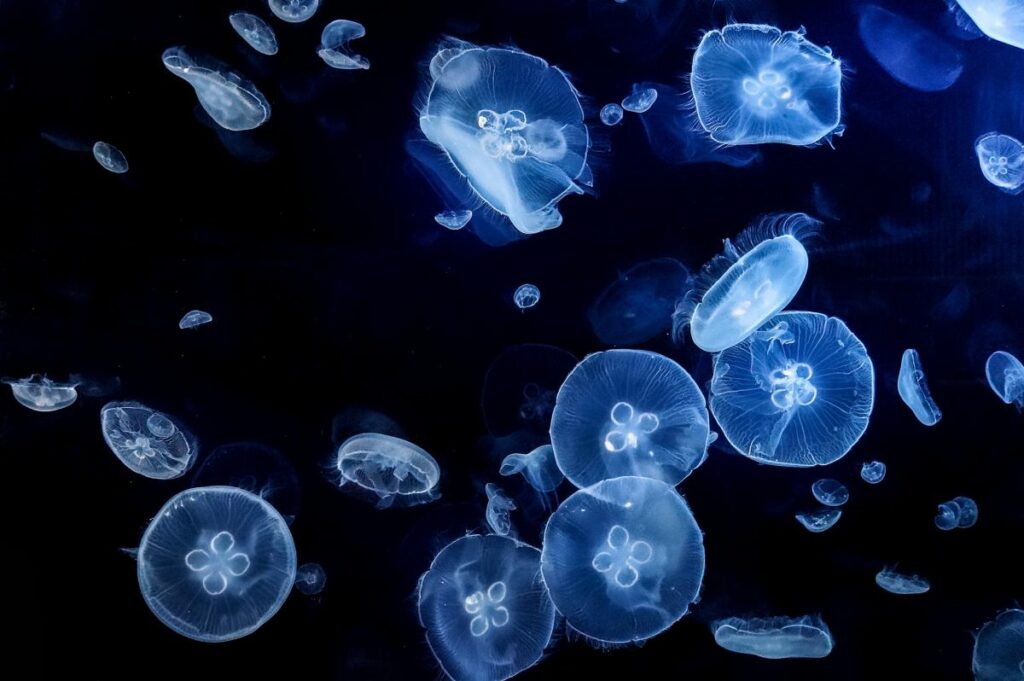
Cnidaria is the scientific name, or phylum, for jellyfish. Cnidaria means they contain stinging cells they use for protection and catching prey.
Some of these jellyfish are massive, while others are miniscule, but far more dangerous. Some are recent discoveries. Others can live forever or live in harmony with algae that provide them with food. Every jellyfish species is unique in its own way.
Largest Species Of Jellyfish
Some jellyfish grow to impressively massive sizes, both in length and weight. Here are three of the biggest jellyfish species.
1. Lion’s Mane Jellyfish (Cyanea capillata)
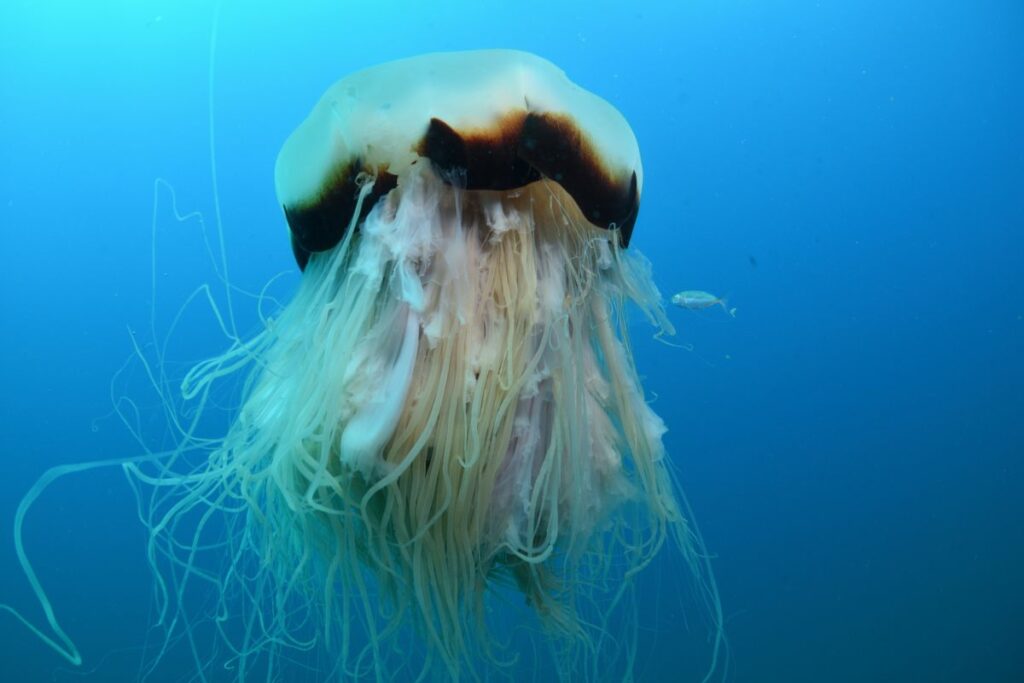
The lion’s mane jellyfish is the largest jellyfish species that we know of. The largest lion’s mane jellyfish was 120 ft (36.6 m) long, which rivals the blue whale. Blue whales typically grow to about 90 ft (27.4 m) long, and they are the largest animals in the world.
While they have a powerful sting, most humans don’t need to worry about lion’s mane jellyfish. They prefer cooler waters, so they live in the Arctic and North Pacific Ocean. You are most likely to see them in the open ocean from Washington to Alaska.
They get their name from their many long tentacles that gather in clusters resembling a lion’s mane. Eight sections divide the bell, and each section contains about 150 tentacles. Most lion’s mane jellies have about 1,200 tentacles.
Many jellyfish species are opportunistic, waiting for prey to get close to their tentacles before catching them. Lion’s mane jellyfish seem to take a more active role in getting their food. The jellyfish extend their tentacles away from themselves, creating a sort of net with their appendages that traps their prey.
2. Nomura’s Jellyfish (Nemopilema nomurai)
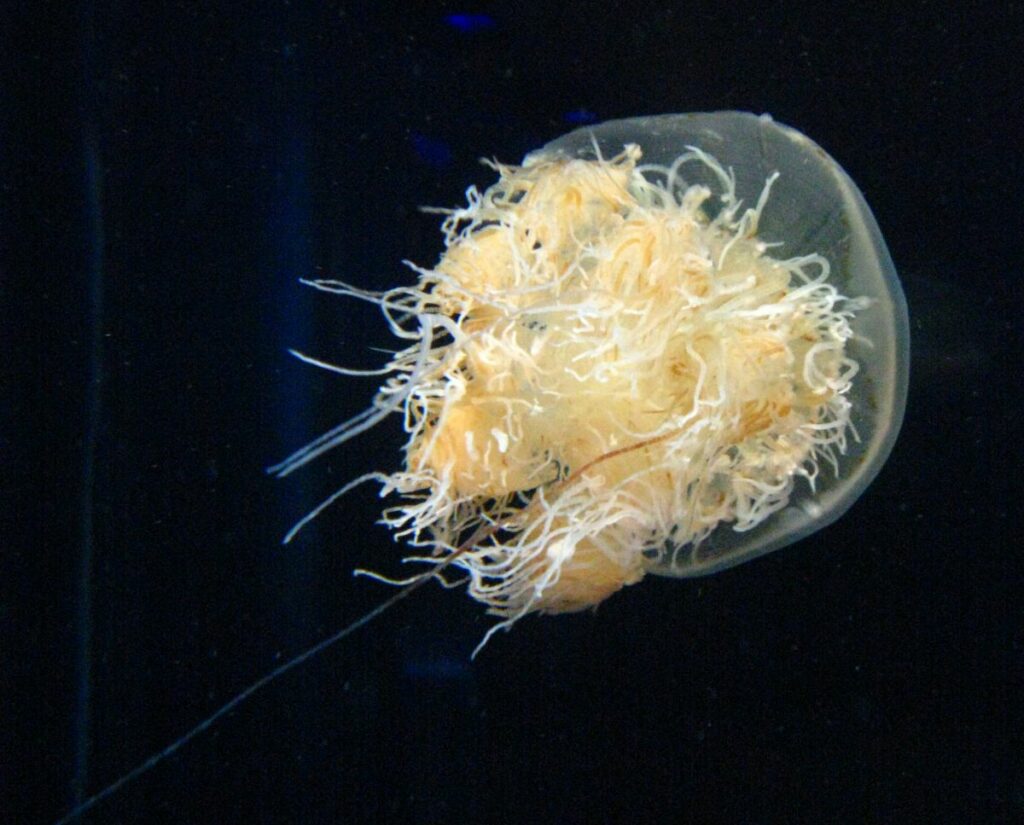
Nomura’s jellyfish is another massive species that can reach 450 lbs (204.1 kg) in a single year. Despite their incredible weight, they only grow to about 6 ft (1.8 m) long, which seems tiny compared to the lion’s mane’s length.
How do these jellyfish get so massive? Unlike most jellyfish who only have one mouth, Nomura’s jellyfish has hundreds of minuscule mouths that it uses to constantly take in food like plankton and larger fish.
Nomura’s jellyfish are a prized delicacy to the people of Japan. An ice cream company in Japan serves jellyfish ice cream comprising jellyfish tentacles.
These jellyfish are also causing problems with local fisheries. They live in waters off the coasts of China, Japan, and Korea.
Fish usually control jellyfish populations because the two animals compete for the same foods. But, with overfishing driving down the fish populations, giant jellyfish populations are surging.
3. Barrel Jellyfish (Rhizostoma pulmo)
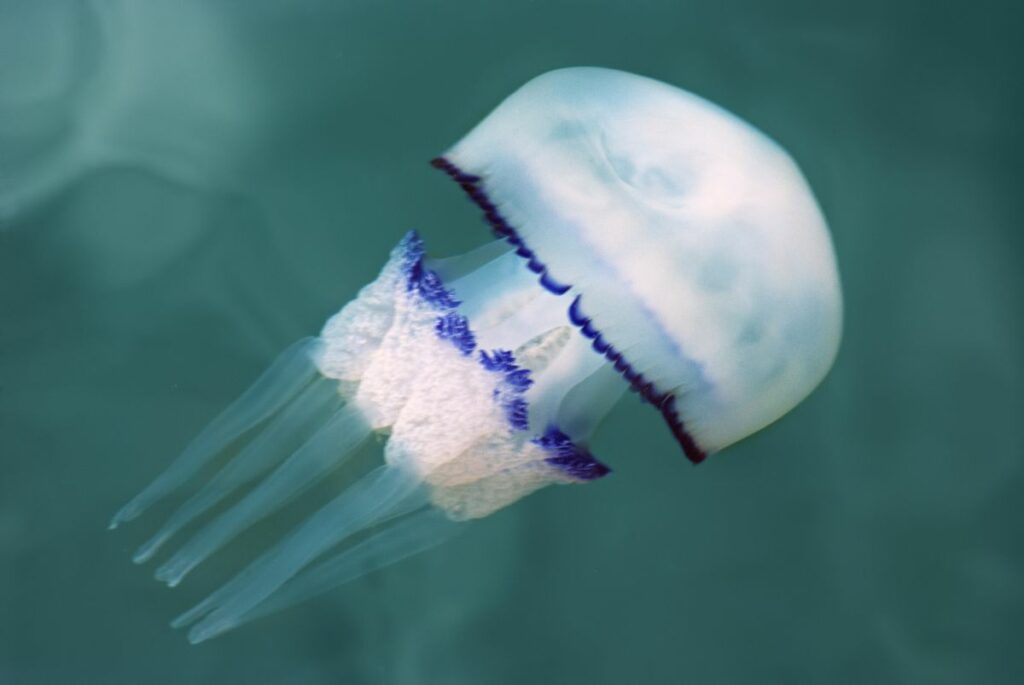
Barrel jellyfish are the largest jellyfish that live in the waters off the shores of the United Kingdom. Their bodies average about 3 ft (0.9 m) in length. Their size may seem small compared to the lion’s mane, but they are still huge compared to most jellyfish species.
Barrel jellyfish prefer to hunt near the coast, and they often wash up on U.K. beaches between May and June. Sometimes, residents of these areas will see hundreds of barrel jellyfish washing up on their shores all at once.
They primarily eat plankton, which is most abundant in shallow waters. Often underestimating the depth of the water they’re in and their size, they get too close to the shores before being washed up.
Barrel jellyfish also have hundreds of tiny mouths that they use to consume their plankton.
Smallest Jellyfish Species…& The Most Deadly
Some of the smallest jellyfish species are also the most deadly. Their size makes them even more dangerous because you might not see them until after they have stung you.
4. Irukandji Box Jellyfish (Carukia barnesi)
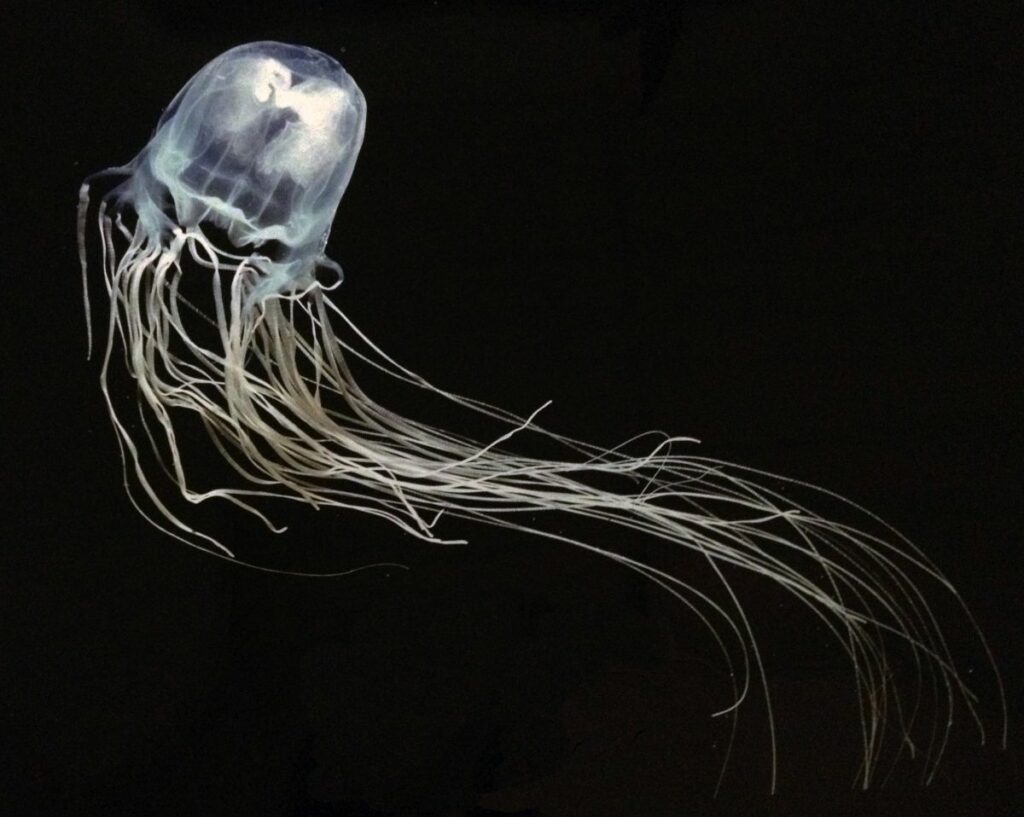
The Irukandji box jellyfish is the smallest jellyfish in the world with a bell that is only about 0.39 in (1 cm) long. Despite the size of its bell, its stinging tentacles can be as long as 3.2 ft (1 m).
Irukandji box jellyfish live in the waters off the coast of Australia. Their venom is toxic enough to paralyze the lungs and the heart. They can also cause brain hemorrhaging. Areas of the body with more nerve endings, like the face, will be more painful when stung.
About 50-100 people go to the hospital every year for treatment of Irukandji box jellyfish stings.
An Irukandji box jellyfish stung one teenager, Hannah, and by the time her mother reached her 40 minutes later, she was coughing up blood and shaking. Hospital staff put her into an induced coma for two days to stabilize her condition.
When she woke up, Hannah said it felt like her lungs, heart, and entire body were crumbling. The pain was immense as Hannah fought the toxins from her body, but she survived.
Fatalities by this species are rare, but not unheard of.
5. Mangrove Box Jellyfish (Tripedalia cystophora)
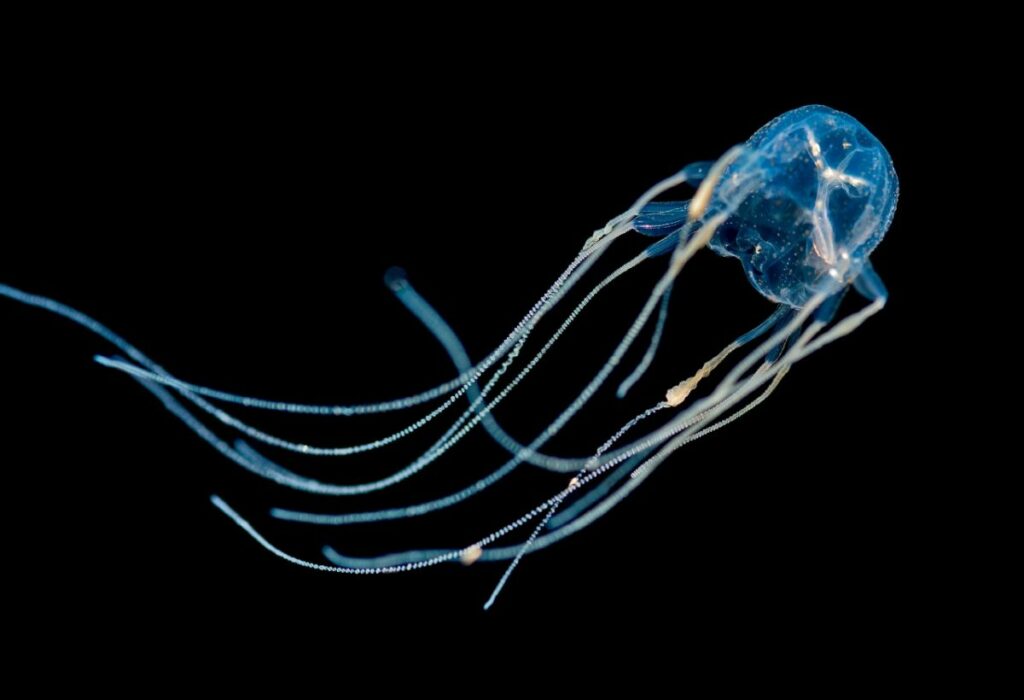
Mangrove box jellyfish have box-shaped bells, and they are one of the smallest jellyfish in the world. Individuals only grow to about 0.5 in (1.3 cm) in diameter, their bells only growing to the size of a grape.
These jellies live in the waters off the Gulf of Mexico and the Caribbean. They also inhabit the Atlantic Ocean from Florida to Puerto Rico. They get their name because they live in tropical mangrove forests along coastlines. Larva settles on mangrove roots to form polyps. As adults, mangrove box jellies live amongst the roots of the trees.
Unlike the Irukandji box jelly and other box jellyfish species, the mangrove box jelly is harmless to humans.
Most jellyfish have primitive eyespots that allow them to sense light, but not see anything. Mangrove box jellies have several sets of eyes that can see blurry images, helping them to hunt copepods.
New Species Of Jellyfish
There are over 2,000 species of jellyfish that we know of, but researchers are always discovering new species. Here are some of the world’s most recent discoveries.
6. Atolla reynoldsi
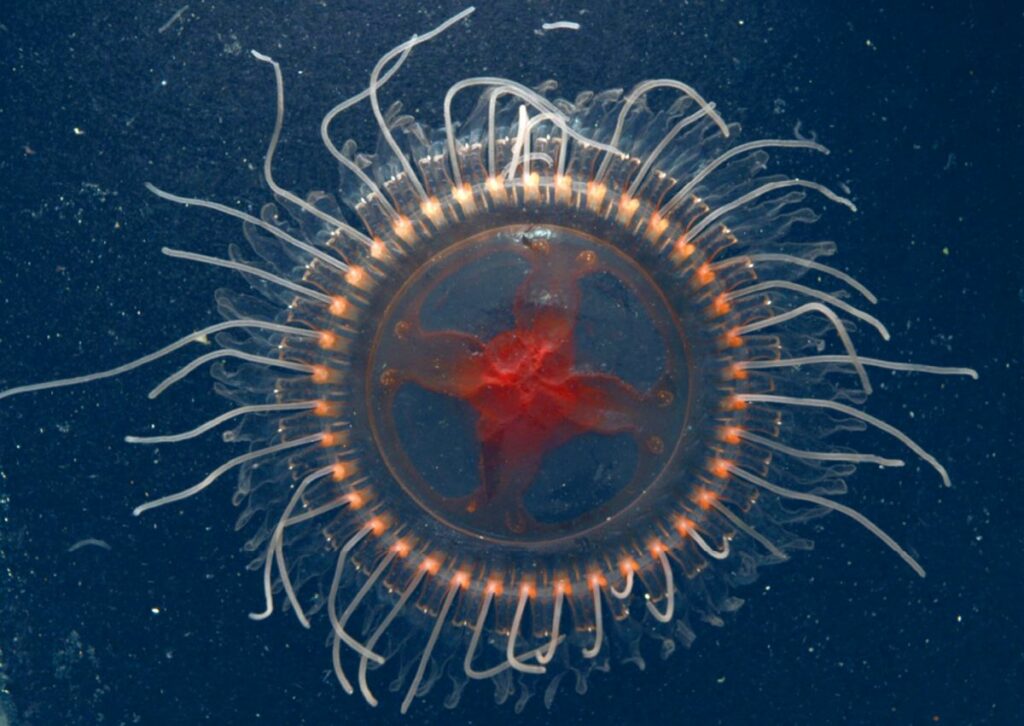
Atolla jellyfish themselves are not a completely new species, but the Atolla reynoldsi is. Atolla reynoldsi is one of three species that researchers once considered part of a single Atolla species.
Recently, researchers discovered Atolla reynoldsi off the Monterey Bay California coast.
Atolla reynoldsi is a deep-sea-dwelling jellyfish that inhabits the “midnight” zone, or the bathypelagic zone. The midnight zone extends from 3,280.8-13,123.4 ft (1,000-4,000 m) below the surface of the ocean. The midnight zone is so deep that no light penetrates the water, the pressure is immense, and the water is frigid.
Researchers knew about the Atolla jellyfish, a strange-looking red jellyfish with a single trailing tentacle. Then, they saw some Atollas had no tentacles at all.
George Matsumoto, MBARI senior education and research specialist, had this to say about the experience:
“We realized that we had found an unusual jelly around 2014 and went back through our records to find a few additional observations. We also kept an eye out for additional sightings so that we could obtain specimens to examine and deposit at the California Academy of Sciences.”
Researchers have discovered three different jellies that look like Atollas, but lack tentacles. To date, researchers have only seen 10 individuals between 2006 and 2021.
7. Chirodectes maculatus
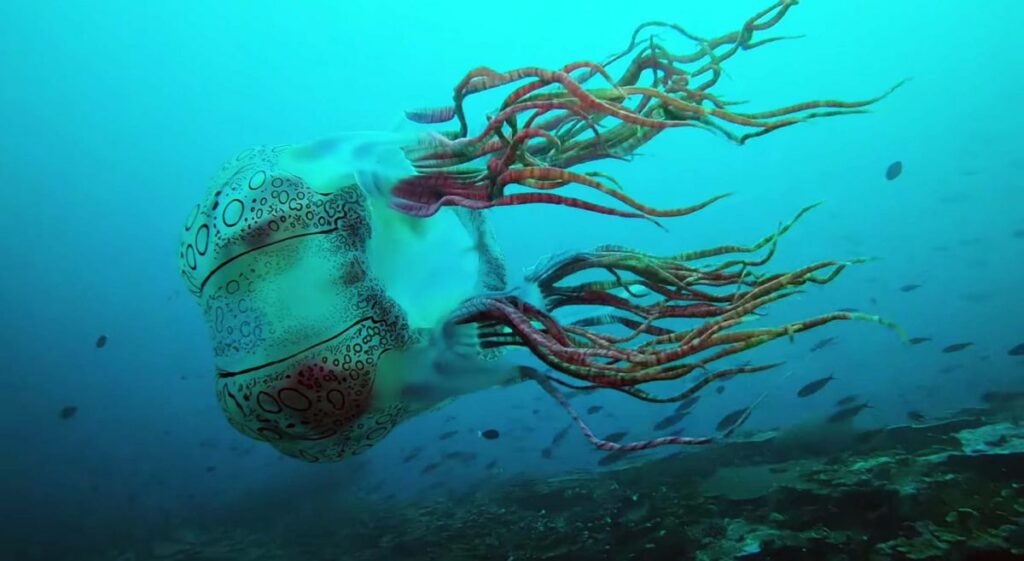
Scuba diver Dorian Borcherds went diving in the waters of Papua New Guinea and captured video of a new jellyfish species.
Researchers thought they saw this new jellyfish species once before, in 1997, off the coast of Far North Queensland. After extensive research, scientists say this is a completely new species.
Researchers have not officially labeled this a “new discovery”.
Dr. Lisa Gershwin from the Australian Marine Stinger Advisory Service says, “A new species is considered like a hypothesis,it has to be tested. It’s not technically discovered until it has been formally named and classified.”
Further, she says, “I’m being very meticulous as I was involved in the re-classification of the original species, so I want to be more than right, I’m crossing every t and dotting every i. On top of that, we still have the mystery of where did the Great Barrier Reef specimen come from?”
8. Bonaire Banded Box Jellyfish (Tamoya ohboya)
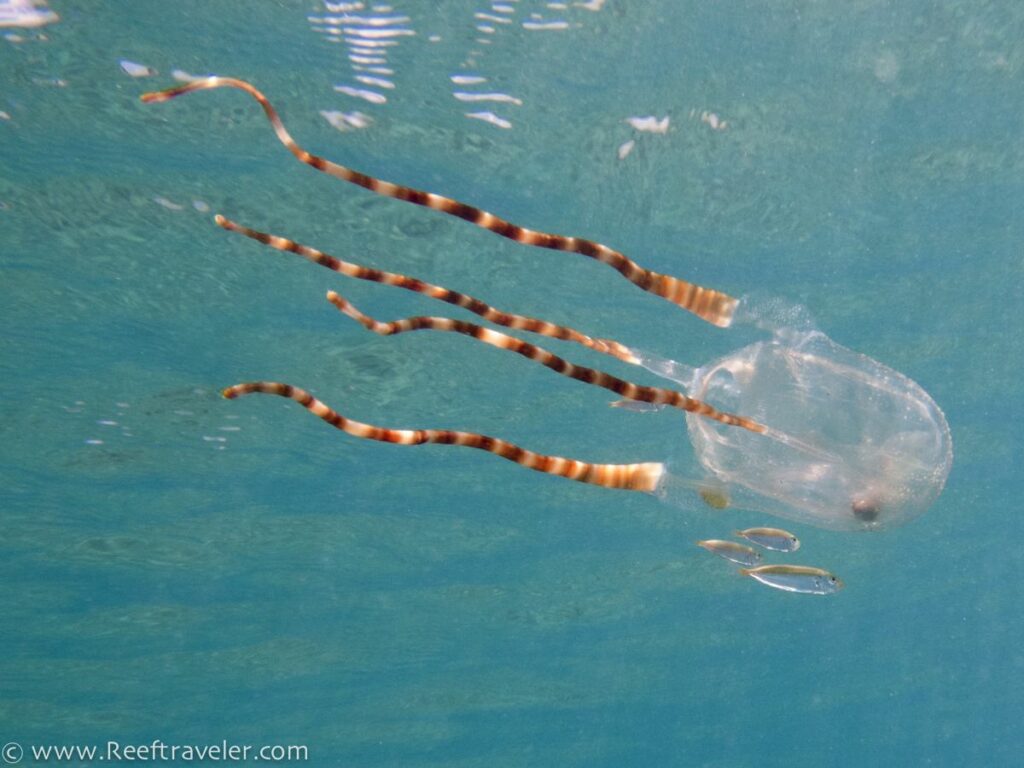
In 2011, researchers from the Smithsonian’s National Museum of Natural History identified a new species of jellyfish.
Sightings of the jellyfish have occurred since 1989, but it’s still a relatively new discovery. Since 1989, there have been about 50 sightings. Three of the sightings resulted in stings, with one sting requiring hospitalization. Like most box jellyfish, the Bonaire banded box jellyfish’s sting is incredibly toxic.
The body of these jellyfish is a vibrant reddish-orange color covered in distinct warts.
Cool Jellyfish
There are some species of jellyfish that are downright fascinating, having characteristics that scientists are yet to fully understand.
9. The Immortal Jellyfish (Turritopsis dohrnii)
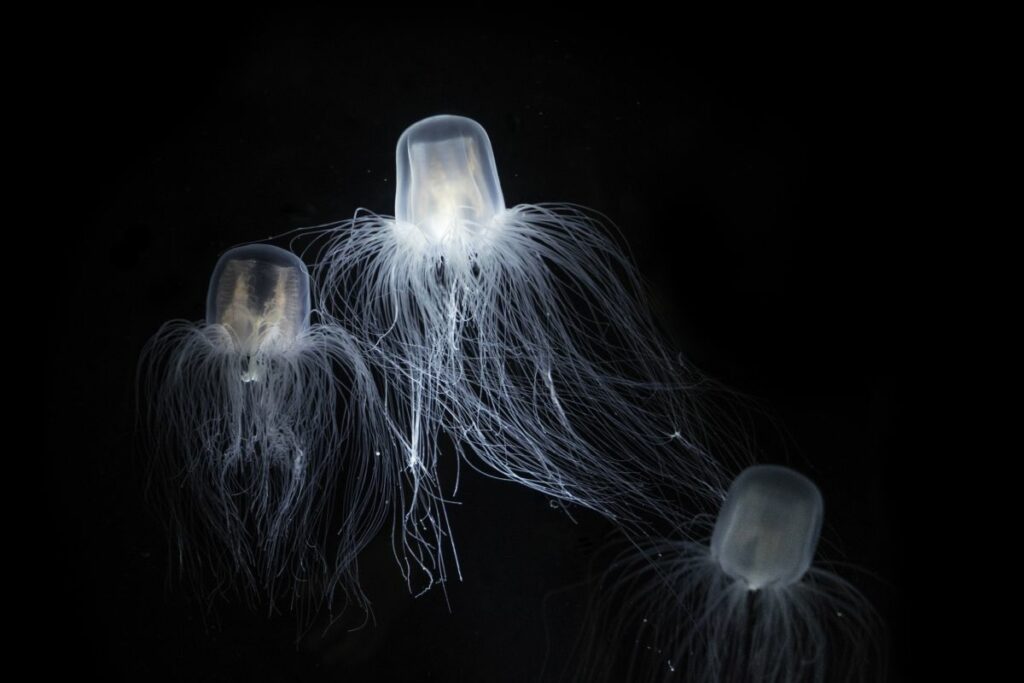
Researchers discovered the immortal jellyfish in the Mediterranean Sea in the 1880s, but they didn’t know of its immortal capabilities. It wasn’t until the 1990s that researchers saw how these jellyfish can “hit the reset button” and turn back their lives.
After hatching, juvenile jellyfish are larvae that free-float through the ocean. As they age, they settle on the seafloor as polyps. They continue growing, becoming juvenile jellyfish called ephyra. Eventually, they become adult medusa jellyfish.
After reaching adulthood, most jellyfish live for a few months and then die. But not the immortal jellyfish.
The immortal jellyfish turns back time when it experiences a threat like starvation or injury. Rather than dying, their cells change and revert them back to their juvenile polyp stage.
Immortal jellyfish can repeat this de-aging process as many times as they need. So, theoretically, these jellyfish can live forever.
Still, immortal jellyfish aren’t truly immortal. They are susceptible to predation and may become a meal one day.
10. Upside-Down Jellyfish (Cassiopea xamachana)
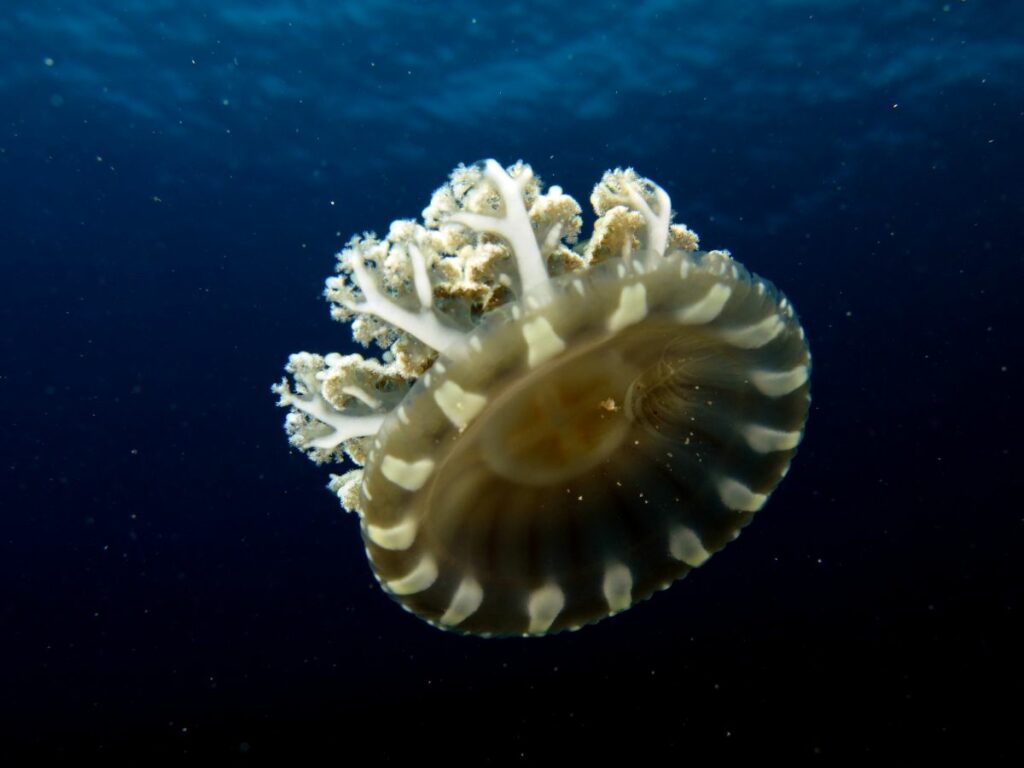
Upside-down jellyfish are small animals, but they are distinctive because of their odd habit of swimming upside-down. They often sit on the seafloor with their bell resting on the substrate and their oral arms and tentacles extending upwards toward the water.
As they are resting on the substrate, their bell continuously pulses to push water over their tissues. Doing so provides them with a steady stream of oxygen and food.
Upside-down jellyfish form a symbiotic relationship with zooxanthellae, a type of algae. The zooxanthellae live within the oral arms of the jellyfish, photosynthesizing, and providing the jellyfish with about 90% of its nutritional needs. The algae also gives the jellyfish a light green color. Zooxanthellae is the same algae that lives in symbiosis with corals.
Conclusion
These 10 jellyfish types have unique characteristics that make them truly stand out. In the arctic, you may come across a jellyfish who is hundreds of feet long. Near Australia, you may see tiny jellyfish that can land you in the hospital. If you’re lucky, you may even spot the curious immortal jellyfish that can live forever.
FAQs
Most jellyfish can’t see anything other than light. They don’t have true eyes. They have eyespots that allow them to sense light, but nothing else.
Some box jellyfish have human-like eyes that truly allow them to see. Box jellyfish actively swim through the ocean, unlike most jellyfish who simply drift. Such a feat is likely because of the eyes that hang from structures on their bodies. Their eyes help them see light, color, and the size of objects.
Jellyfish are cnidarians, a group of animals that have stinging cells. There are 13,000 species in the phylum cnidaria, and their relatives include other cnidarians like corals, anemones, stalked jellyfish, siphonophores, and hydroids.
We call groups of jellyfish “swarms” or “blooms”, depending on the situation.
A “swarm” occurs when strong currents or storms push many jellies into the same area.
A “bloom” refers to a reproductive boom of jellyfish in an area because of ideal conditions.
